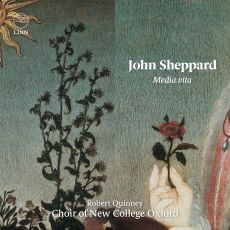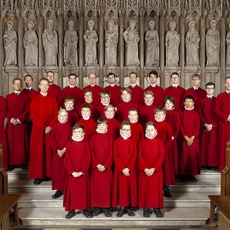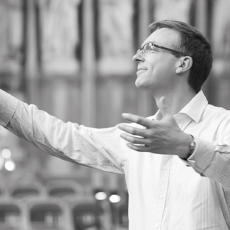Choir of New College Oxford & Robert Quinney - Sheppard: Media vita - American Record Guide
Of the major composers of sacred music in Tudor England, John Sheppard (c1515-58) is probably the least known. Nothing certain is known about him before his appointment as Informator Choristarum at Magdalen College, Oxford, in 1543. He served there for five years. By 1552 he was a Gentleman of the Chapel Royal. In 1554 he supplicated for the degree of Doctor of Music at Oxford University, claiming that he had been composing for 20 years. From that claim it is conjectured that he was born around 1515. He seems to have died around the time Elizabeth I came to the throne. The 1558 grave of "John Scheperde" in St Margaret’s Church, Westminster, is thought to be his. The present recording consists of music with Latin texts, most likely composed during the reign of Mary Tudor. 'A Solis Ortus Cardine' and 'Sacris Solemniis' are office hymns with polyphony alternating with plainsong. 'Media Vita' is an extended setting of the Nunc Dimittis antiphon and responsory for the Third Sunday in Lent. It may have been written for the funeral of Sheppard’s colleague Nicholas Ludford. The remaining pieces are motets on Old Testament texts. As Robert Quinney points out in the notes, the pieces fall into two distinct groups: ones based on cantus firmus technique and ones with imitative counterpoint. In some instances, as in 'Media Vita', Sheppard combines the two techniques, with imitative voices spun out over a cantus firmus in long notes. Here he seems to continue the aesthetic world of pre-Reformation English polyphony as found in the Eton Choirbook, with music of "spacious, even cosmic dimensions", as Quinney puts it. In contrast, the Old Testament motets are based on successive points of imitation. They are more in keeping with the kind of polyphony emanating from the European Continent at that time. Four of the pieces on this program are claimed as first recordings. The choir of New College, Oxford, is one of the most celebrated of the traditional English choral foundations. The technical standard is outstanding. There is no need to make allowance for any shortcomings in the boys’ performance; they are completely secure in pitch and ensemble.


